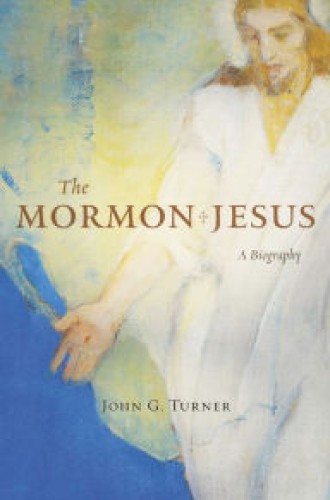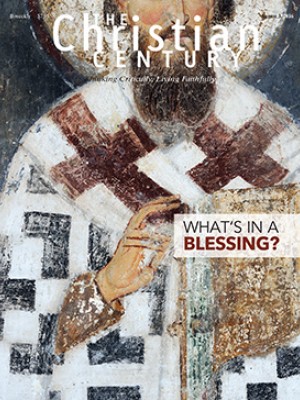Jesus and the Latter-day Saints
Four years ago, this book would have piqued the interest of thousands of Americans. We were then living amid “the Mormon Moment.” Mitt Romney was pressing to unseat President Barack Obama and become the first Mormon patriarch to occupy the White House. Broadway audiences flocked to The Book of Mormon, which won a host of awards. Mormon Girl, also known as Joanna Brooks, made a guest appearance on The Daily Show where she and Jon Stewart awkwardly discussed religious food traditions. Everyone seemed to love Saratoga Springs, Utah, mayor Mia Love, a Haitian American and a Mormon convert. She almost won a seat in Congress that year. Four years ago, it seemed that anything and everything related to Mormonism was ripe for public picking.
How the times have changed. The Church of Jesus Christ of Latter-day Saints makes national or international news only when its leadership makes a decision or statement against LGBT rights or women’s rights. Mia Love actually won a spot in Congress in 2014, but no one seemed excited. In July of that year, a writer for the New York Times announced “the end of the ‘Mormon Moment.’” With this changing of the times it’s hard to imagine any groups, except for scholars and Mormons themselves, to be curious about historian John G. Turner’s new book The Mormon Jesus: A Biography. As far as academic books are concerned, it is fairly good. For exciting, pathbreaking scholarly work, however, one should look elsewhere. And in terms of political or religious flavors of the month, The Mormon Jesus may be expired before it hits the shelves.
Read our latest issue or browse back issues.
Turner meticulously combs through the various ways Mormon Americans have thought about, seen, heard, described, depicted, and worshiped Jesus. Each chapter focuses on a different theme. One examines the place of Jesus in the Book of Mormon (“translated” by Joseph Smith in the late 1820s and first printed in 1830). In another chapter, Turner discusses the visionary experiences of Mormons who claim to have seen Jesus. Other chapters delve into Mormon eschatology, the role of Jesus in temple ceremonies, and why Mormons seem to insist that Jesus was white. The Mormon Jesus is an able scholarly work. Secondary sources are consulted; primary sources are quoted.
Along the way, Turner showcases how Mormonism past and present follows in the line of other Christian traditions, connects with various contexts in American history, and deviates from religious norms and customs. As was the case in Turner’s earlier biography of Brigham Young, the author seems most at home when comparing and contrasting Mormonism with American evangelicalism and Christian traditionalism. The Mormon Jesus is less about the role of Jesus in shaping Mormon culture and more about how Mormon conceptions of Jesus stack up against other Christian ones.
The most fascinating chapter of the book, “The Great Bridegroom,” examines Mormon discussions of Jesus as husband and parent. Before judging this as yet another example of Mormonism’s singular mix of religious symbol and family life, readers may want to remember that in the parable of the ten virgins the bridegroom seems to be Jesus. The church itself is described in Ephesians as the bride of Christ. Some Catholic nuns believe themselves to be married or betrothed to Jesus. Put simply, there are many Christians traditions that espouse a spousal place for Jesus. Everyone should drop their stones by their sides.
Mormon history, however, takes a unique turn when it comes to Jesus as husband. Throughout history, leading Mormons have voiced distinct approaches regarding the bodies of God and Jesus. The first two points are not strongly debated within the Mormon church: God has a body and Jesus had one before he became flesh 2,000 years ago. The third point has been far more controversial: both God and Jesus have used their bodies in procreative acts to create other bodies. In short, God and Jesus have made babies—God with the Heavenly Mother, and Jesus with one of his wives. For these Mormons, Jesus had at least one wife, perhaps more than one, and he probably had children. As Turner is quick to mention, dreams of a married Jesus who provided a biological lineage are not confined to Mormon circles. Not only have some Protestant thinkers and Catholic apostates toyed with the topic of a married Jesus, but millions of readers gushed over Dan Brown’s The Da Vinci Code, which featured descendants of Jesus as part of its intricate plot.
Most of The Mormon Jesus pertains to the first years of Mormonism and the 19th century. It was during that time that Joseph Smith, Brigham Young, and others deviated from and experimented with the Protestant Christianity of their day. It was during those decades, moreover, that the church was more elastic. Believers had greater flexibility in experience and expression. During the 20th and 21st centuries, the church has become more bureaucratic and increasingly sensitive to the opinions of outsiders. During these years, the more exotic Mormon teachings about Jesus (such as his many wives) have been downplayed or outright denounced, while the more normative elements (such as incarnations of Jesus in the so-called Old Testament) have been pronounced.
As I read this book, I was reminded of how impressive Jaroslav Pelikan’s Jesus Through the Centuries (1985) and Stephen Prothero’s American Jesus (2003) are. For those interested in a general and holistic sense of how Christians have considered Jesus, Pelikan’s book is the one to read. For those desiring a readable and erudite romp through the ways Americans have reconfigured Jesus, Prothero’s will be a joy. Only those truly dedicated to American religious history and Mormon studies will gravitate to Turner’s The Mormon Jesus.
Alas, if this book had been available in 2012, Jon Stewart could have poked fun at Mitt Romney by asking how many “binders full of women” Jesus had. Turner could have laughed at the joke and boiled down some of his diligent research into sound bites, and the Mormon Moment may have provided yet another scholarly moment. Timing may not be everything, but just like in comedy, it matters a lot. In the case of The Mormon Jesus, we may just have to wait for the Mormon Moment’s second coming. When will that be? As for that day or hour, it may be as Jesus told his disciples: “No one knows, not even the angels in heaven, nor the Son.”






